An iBook Update Should Be Imminent, But Widescreens Coming In The Fall?
by Charles W. Moore
Some rumoristas had been predicting new iBook and eMac updates for this week, but so far nada, and I'm doubtful that Apple would want to release new hardware in the same week that Tiger is scheduled to pounce. Amazon has evidently spilled the beans about a long-overdue PowerMac speed bump to 2.7 GHz, but I don't anticipate an official announcement until next week earliest. Ditto for an iBook update, which is due (The iBook line was last refreshed in October 2004), but not really overdue by historical precedent. An iBook update has been traditional in April/May for the past four years.
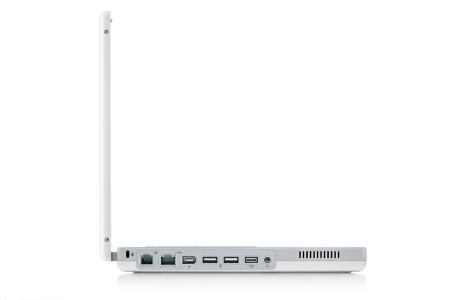
I have no insider knowledge, but here's what I think is likely, based on deduction and what's been reported recently in the Taiwanese IT trade press (more on that in a moment), What I am expecting is an incremental speed bump and spec. upgrade with no form factor change from the one that will be entering its fifth year of production on May 1. I'm guessing 1.33 and 1.5 GHz G4 processors; a RADEON 9600 or better video accelerator to fully support the Core Image feature in OS X 10.4 Tiger; possibly 512 MB standard RAM; and a 40 GB hard drive standard in the base 12 inch model.
If I'm right, that will be cool. The venerable but still attractive iBook design isn't "broke," so there's no compelling urgency about "fixing" it. I love my 28 month old 700 MHz G3 iBook, which has been a flawless performer so far, and were I to be replacing it in the short term, I would wait for the next revision, but would happily buy another 12" iBook.
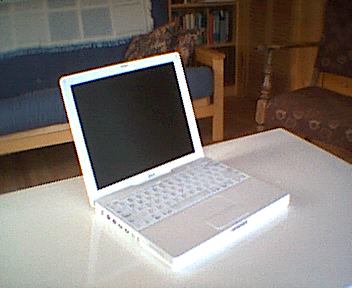
However, looking to the medium term, there may be some exciting new iBooks coming in the fall that would make waiting for a looksee worthwhile so long as your present computer is doing an adequate job. My iBook certainly is. I could use more power for running dictation software and a higher capacity hard drive, but I'm getting along very happily in most respects, especially since I updated to OS 10.3.8. As I post this column, the little 'Book has been up for 34 days since my last reboot. But I digress.
Anyway, a few weeks back David Tzeng and Rodney Chan of the Taiwanese trade journal DigiTimes, citing "sources" close to the deal, posted a report that Apple would be contracting some iBook production to longtime PowerBook supplier Quanta, with Asustek losing its status as the sole contract maker of iBooks.
Tzeng and Chan noted that "Quanta, already the biggest contract maker for Apple's PowerBooks, will start to ship 14.1-inch widescreen iBooks as early as the fourth quarter of 2005, the sources said."
But Asustek isn't being left out. The article further reported that "Asustek has also received orders for a new model, the 15.4-inch iBook, which will be launched in 2006, plus follow-up orders for the 12.1-inch iBook and 12.1-inch PowerBook, the sources said."
You can read the full report here:
http://www.digitimes.com/news/a20050408A1001.html
This week EMSNow Media, LLC's THT Research Newsletter from Taiwan reiterated the Digitimes report, noting that: "Apple has recently added Quanta Computer as an OEM supplier of its iBook (formerly only Asustek supplied iBook), with orders for 14.1-inch widescreen models to ship 4Q05. Quanta also makes some Apple PowerBooks. Asustek will ship the iBook 15.4-inch in 2006, as well as the 12.1-inch iBook and 12.1-inch PowerBook (a large majority of Asustek's OEM notebook shipments are for Apple)."
Of course, Apple will neither confirm nor deny or otherwise comment on these or any other unreleased products, and we won't know for sure until when (and if) widescreen iBooks are released. However, there seems to be some pretty thick smoke here for there not to be a fire. The THT Research Newsletter's repetition of essentially the same predictions as the Digitimes report nearly a month later enhances their credibility.
So does logical deduction. As noted, in the context of computer designs, the iBook is waaaaay overdue for a major revamp. The extraordinary rightness of the dual USB iBook has allowed Apple to stick with it longer than with any other portable form factor in its history. Introduced less than four months after the Titanium PowerBook, which was superseded nearly 20 months ago, the white iBook still looks fresh and contemporary, underscoring the staying power of tasteful, understated simplicity.
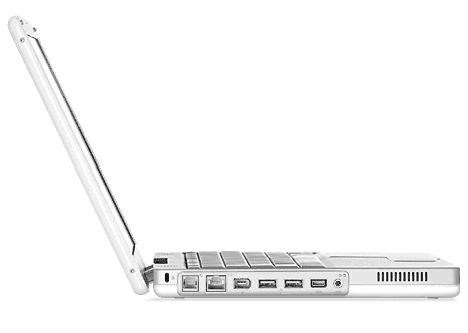
The Taiwanese reports seem to indicate that 12 inch screen iBooks will continue in production for some time yet, so the current design may well see its fifth birthday. However, it looks like the 14 inch iBook is likely to be replaced with some widescreen machines.
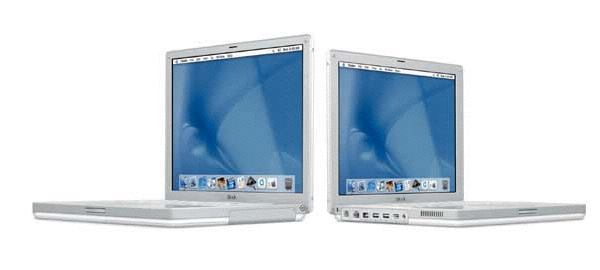
Personally, while I've been an enthusiast for the 12" dual USB iBook since day one, I've never particularly warmed to the 14 incher. It's an excellent computer, sharing all of the functional virtues of the 12" model and with a higher performance and configuration spec., but its 14,1" display is only physically larger, sharing the same 1024 x 768 resolution with the 12.1" unit, and to my eyes, the design did not "stretch" especially gracefully. A pertinent analogy is when Apple stretched the PowerBook 5300 form factor (which I have always thought was charmingly attractive) to accommodate the PowerBook 3400, which was a great computer, but not especially easy on the eyes proportions-wise.
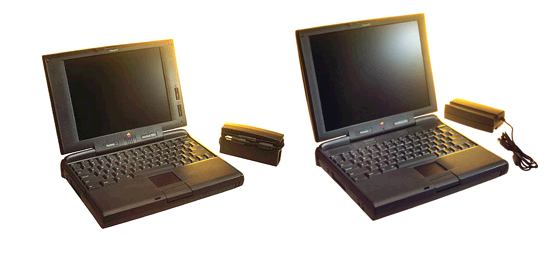
Consequently, I'm eagerly looking forward to what Apple might come up with in terms of industrial design for these "widescreen" iBooks. Indeed, it's possible that there may be a 12" widescreen as well. Why widescreens? Well, why not? - they're cool. The Register's Tony Smith has also suggested that another reason could be that Apple wants to "begin branding certain consumer and high-end notebook and desktop Macs as HD models, the better to link the products to the emerging HD video market." Sounds plausible.
However, yet another raison d'etre for a widescreen iBook would be simply to provide something different that will entice iBook fans to upgrade their systems. There are probably users out there on their second or third dual USB iBook who would like something different just for a change. I'm not generally one to argue in favor of change for change sake, but personally, while a nice, new G4 iBook would be super, my 700 MHz G3 model runs great with Panther and shares virtually identical form factor and aesthetics virtues with the latest G4 models, which removes a considerable proportion of the impetus to upgrade.
If the choice materializes between a continuation of the present 12" iBook form factor and a new 14.1" widescreen version, I might very well still opt for the 12 incher. I really do like this computer. But is would be fun to weigh the pros and cons. I'll be very interested to see what sort of iBook update Apple rolls out sometime in the next few weeks, but I think I'm pretty well resolved now to wait until fall, and the likely opportunity to add a next gen. iBook to my system upgrade candidates shortlist.
PowerBook Mystique Mailbag Powerbook Partitioning Scheme
From Rank Amateur
Hi Charles,
I'm sure you get tons of mail so I won't hold my breath for a response. I'm a long time pc user, soon to be the new owner of a powerbook w/80gb drive. I *always* partition my PC's so I've been searching for a sensible partitioning scheme for my new Mac. As you know, partitioning is a divisive subject and I can't seem to get many straightforward suggestions.
How would you partition a brand spankin' newĘ80gb drive (with OS X Tiger)?ĘĘ
Thanks,
Rank
Hi Rank;
I am also a partitioning fan from way back. Even the little 20 MB drive for my ancient Mac Plus is partitioned.
Partitioning schemes depend much on how you use your computer. OS X likes wide open spaces, so I would suggest a honking big partition for Tiger and associated files.
Personally, the 40 GB drive in my Pismo PowerBook is partitioned 25/10/and the remainder.
If you use Classic mode, I find it works best with the OS 9 System Folder on a partition separate from OS X.
I also prefer to have bootable operating systems on at least two partitions.
Partitioning a Mac HD is simplicity itself using OS X Disk Utility.
Charles